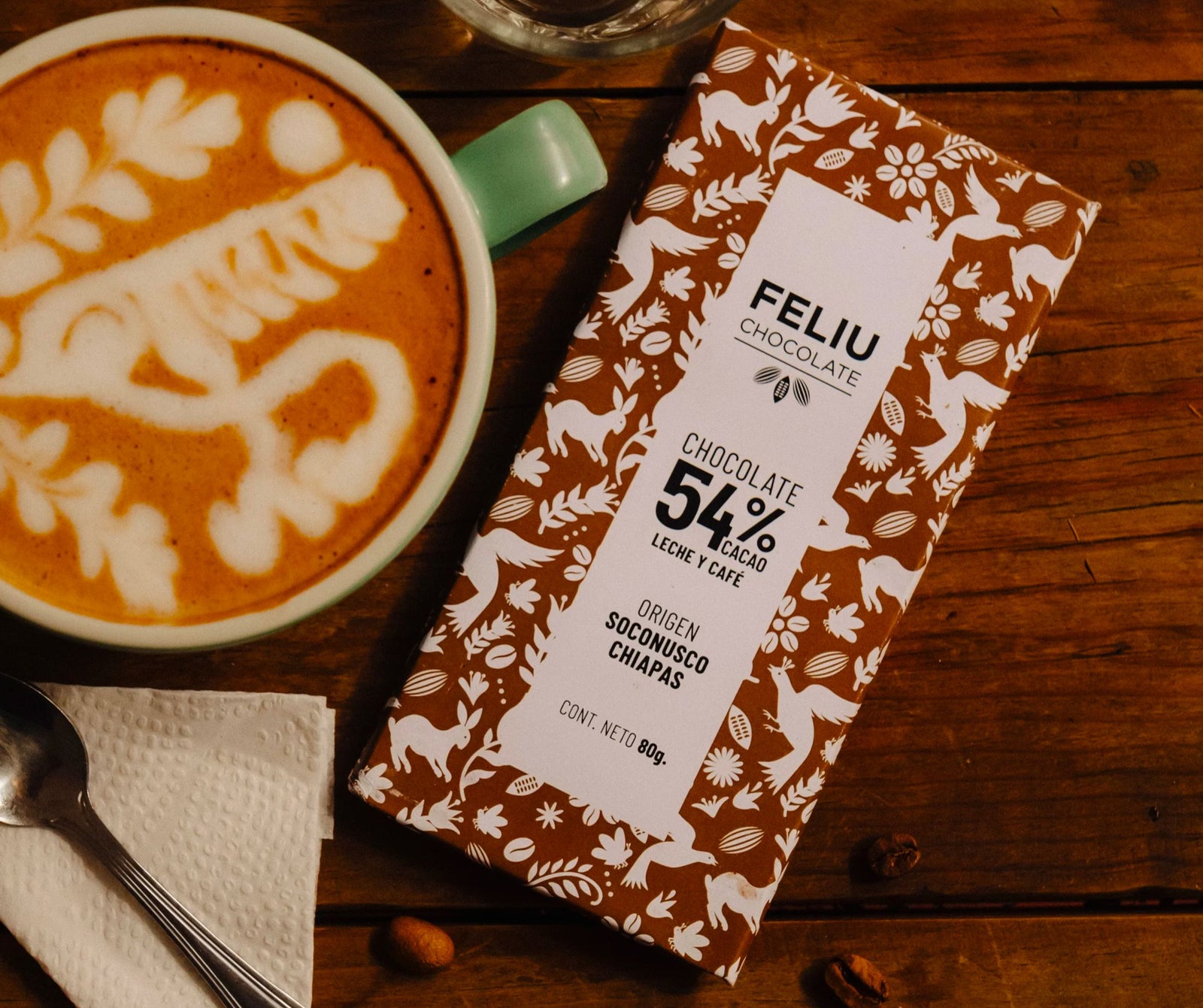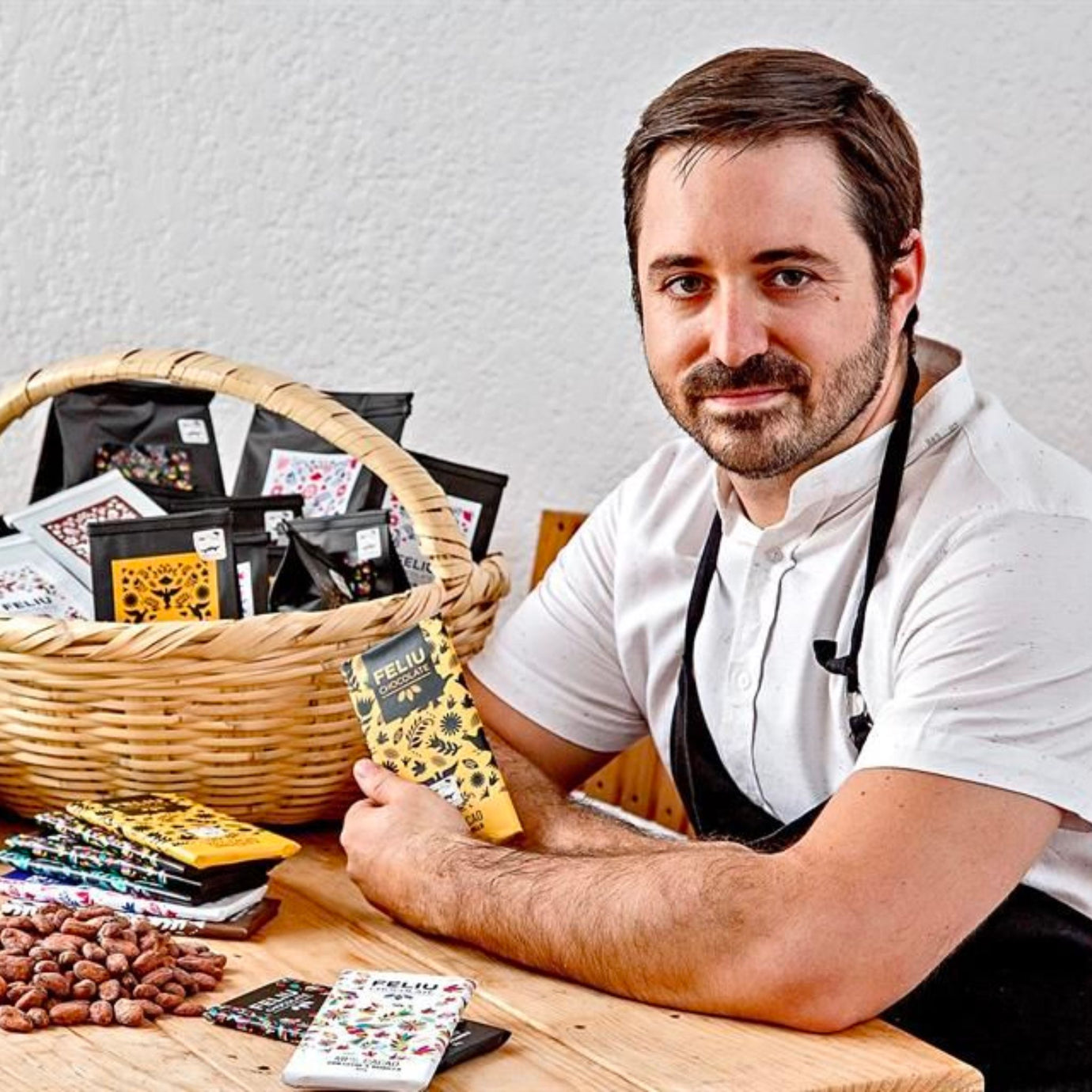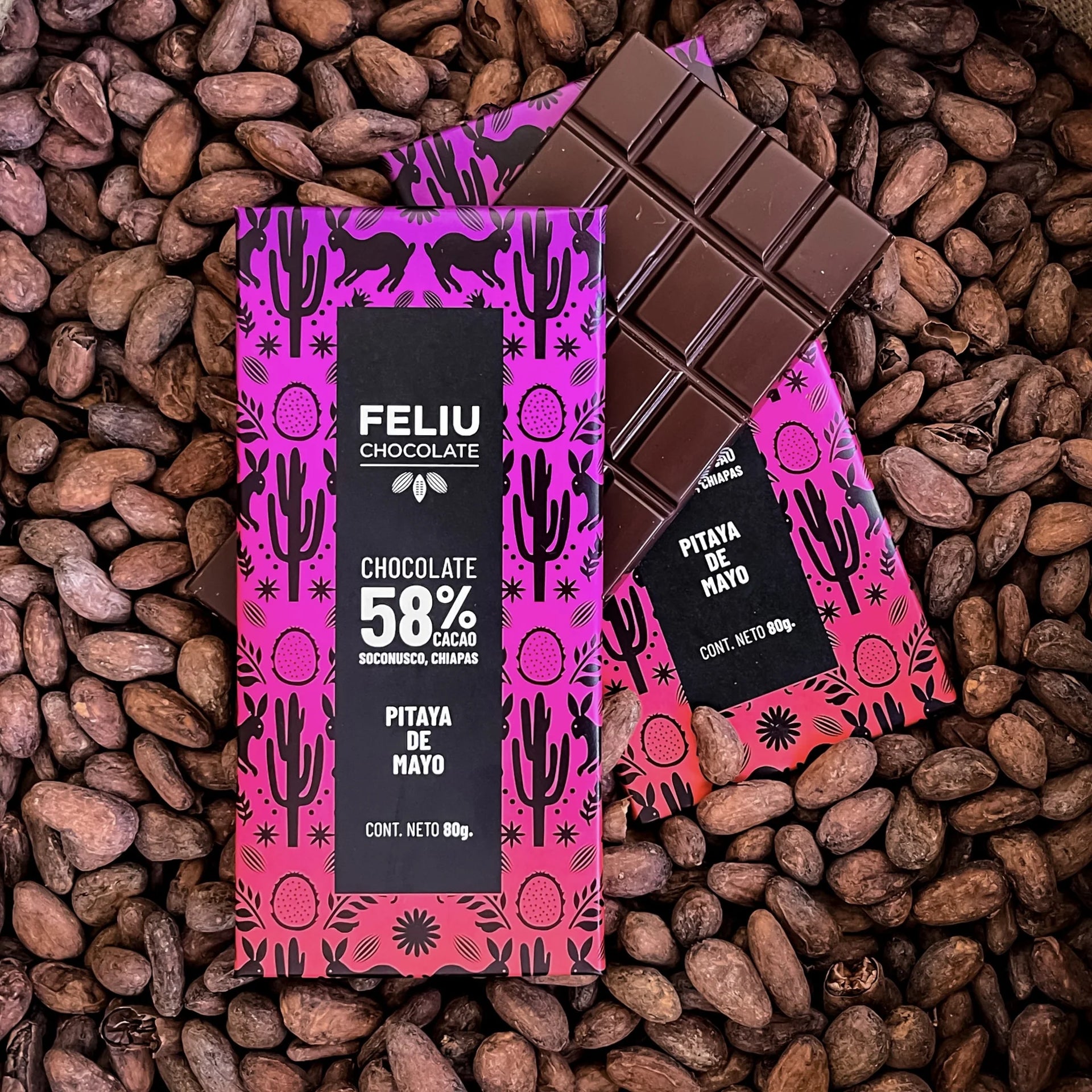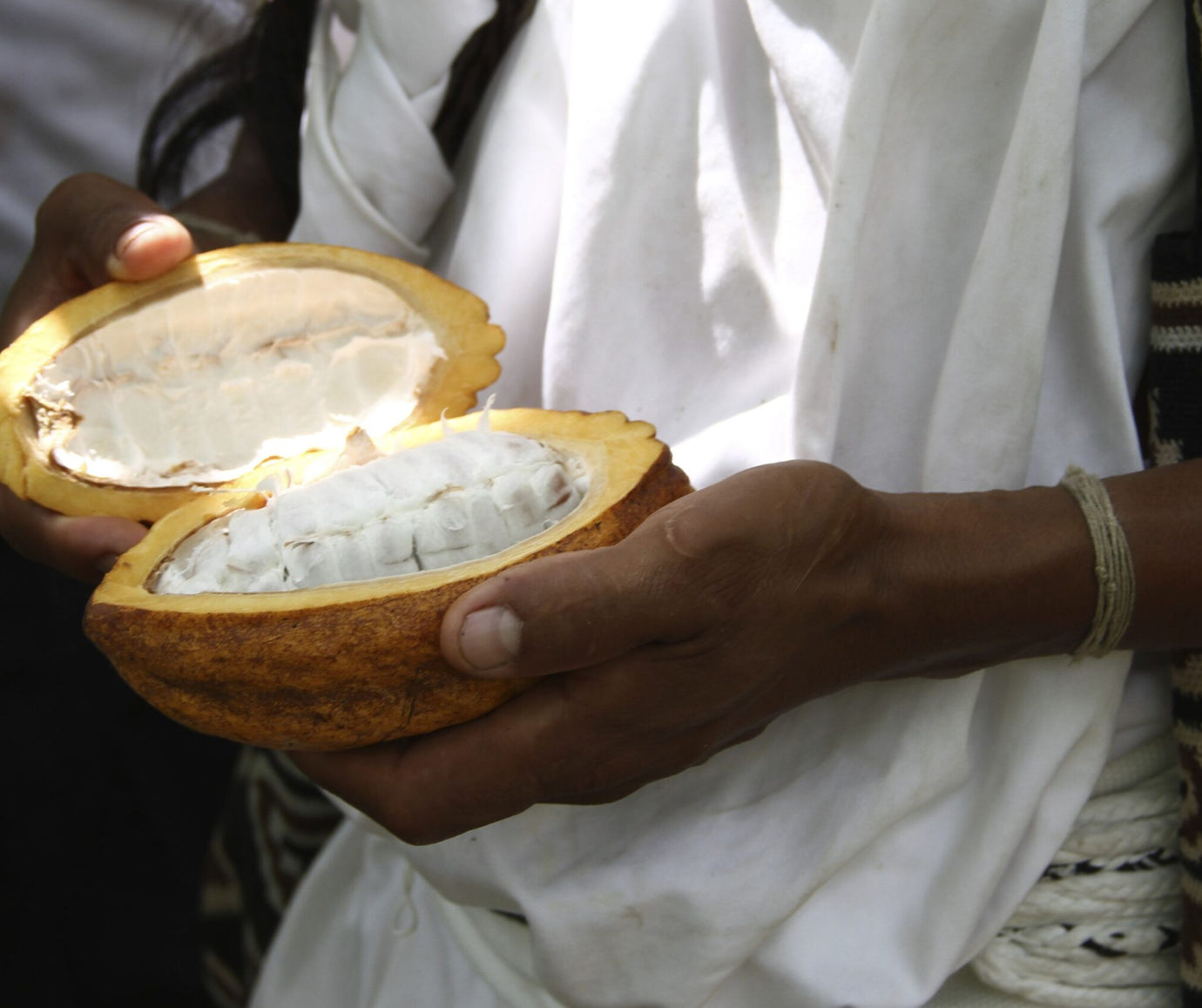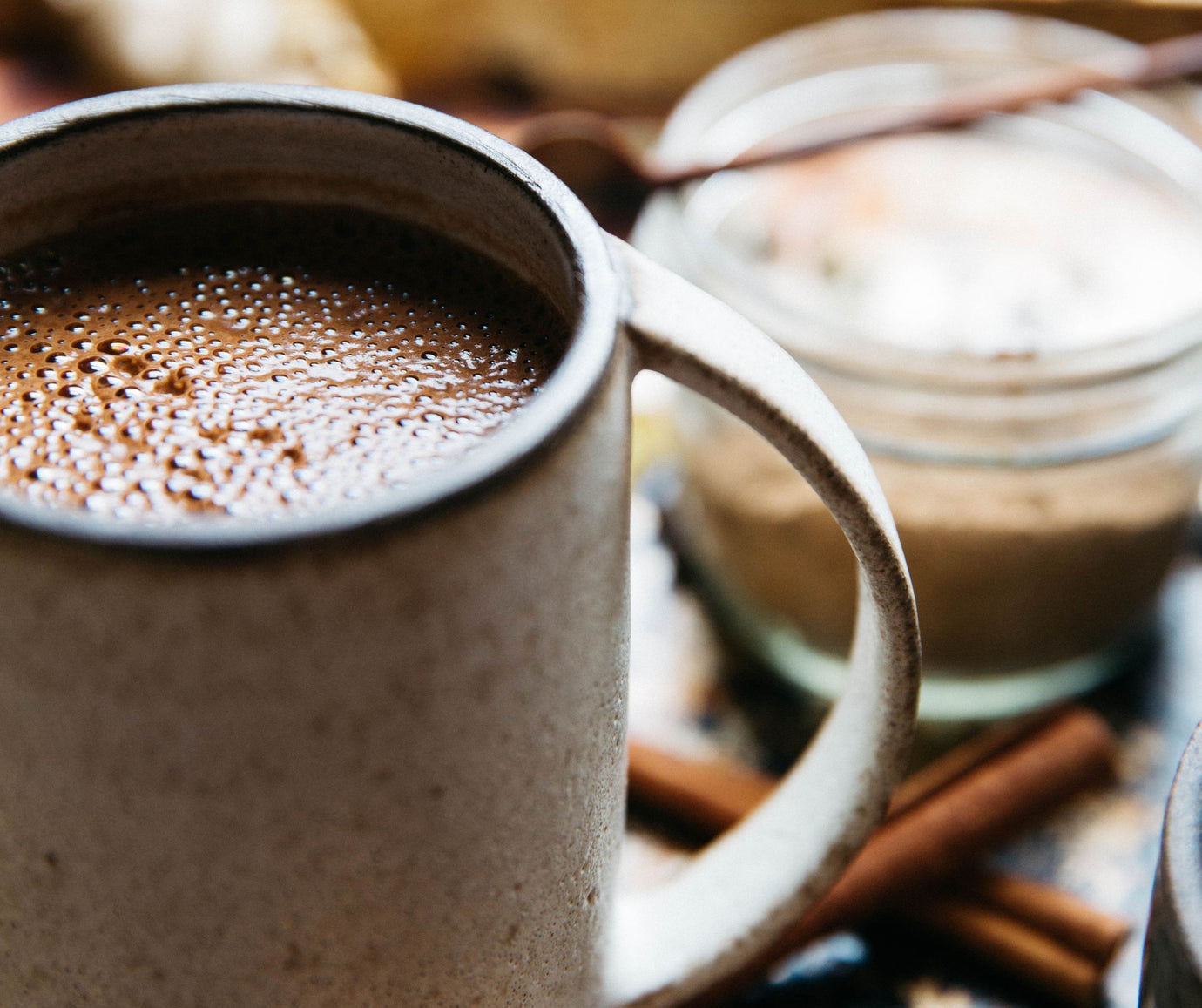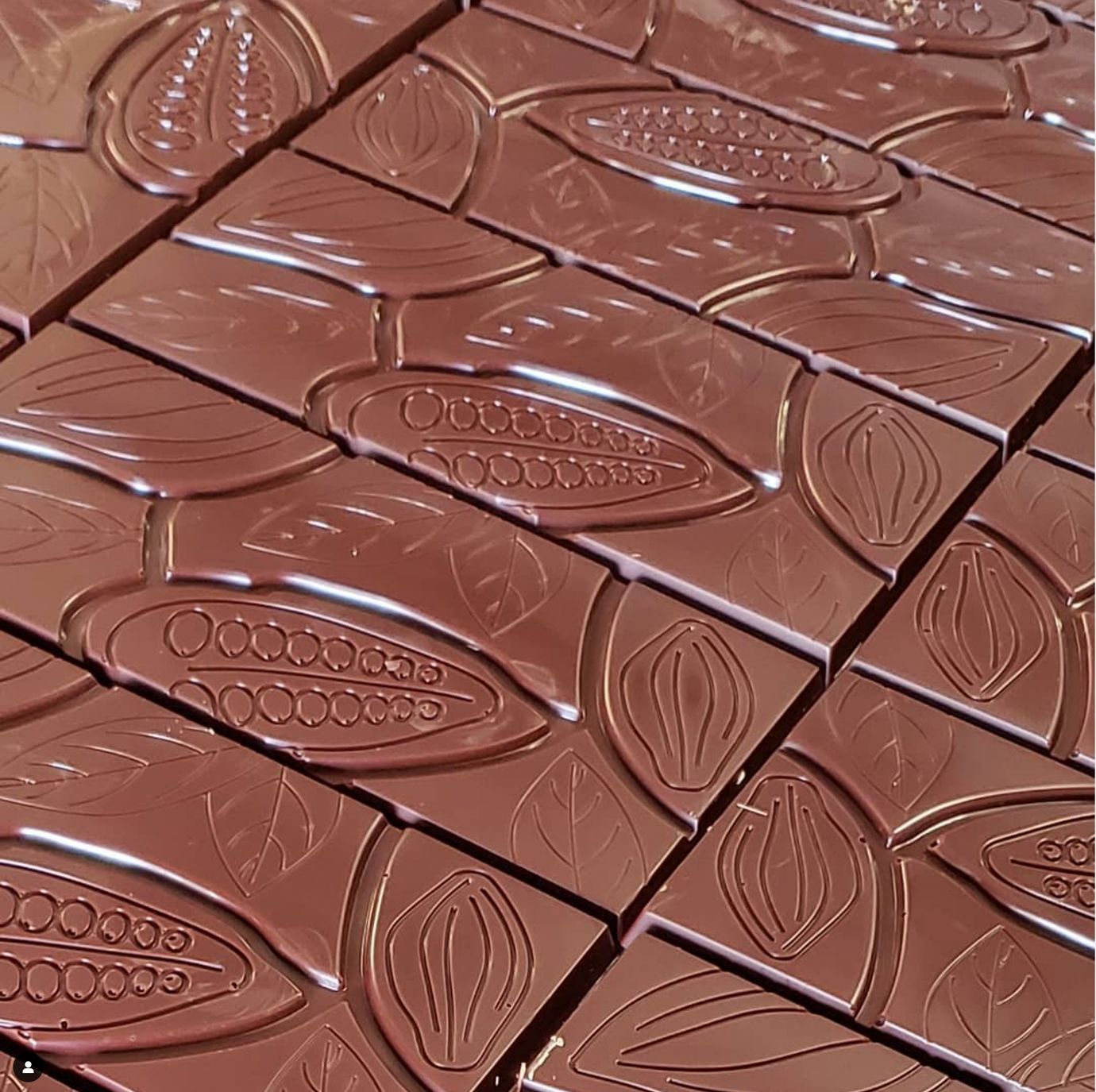Noble dark chocolate made from Criollo cacao from the Mexican Chiapas region. One of our favourites. The light color of this chocolate may mislead you to think that you are about to taste sweet milk chocolate. In fact, you need to be prepared for the most sophisticated taste of a high-end dark chocolate bar.
Our Guide to the Best Mexican Chocolate 2023
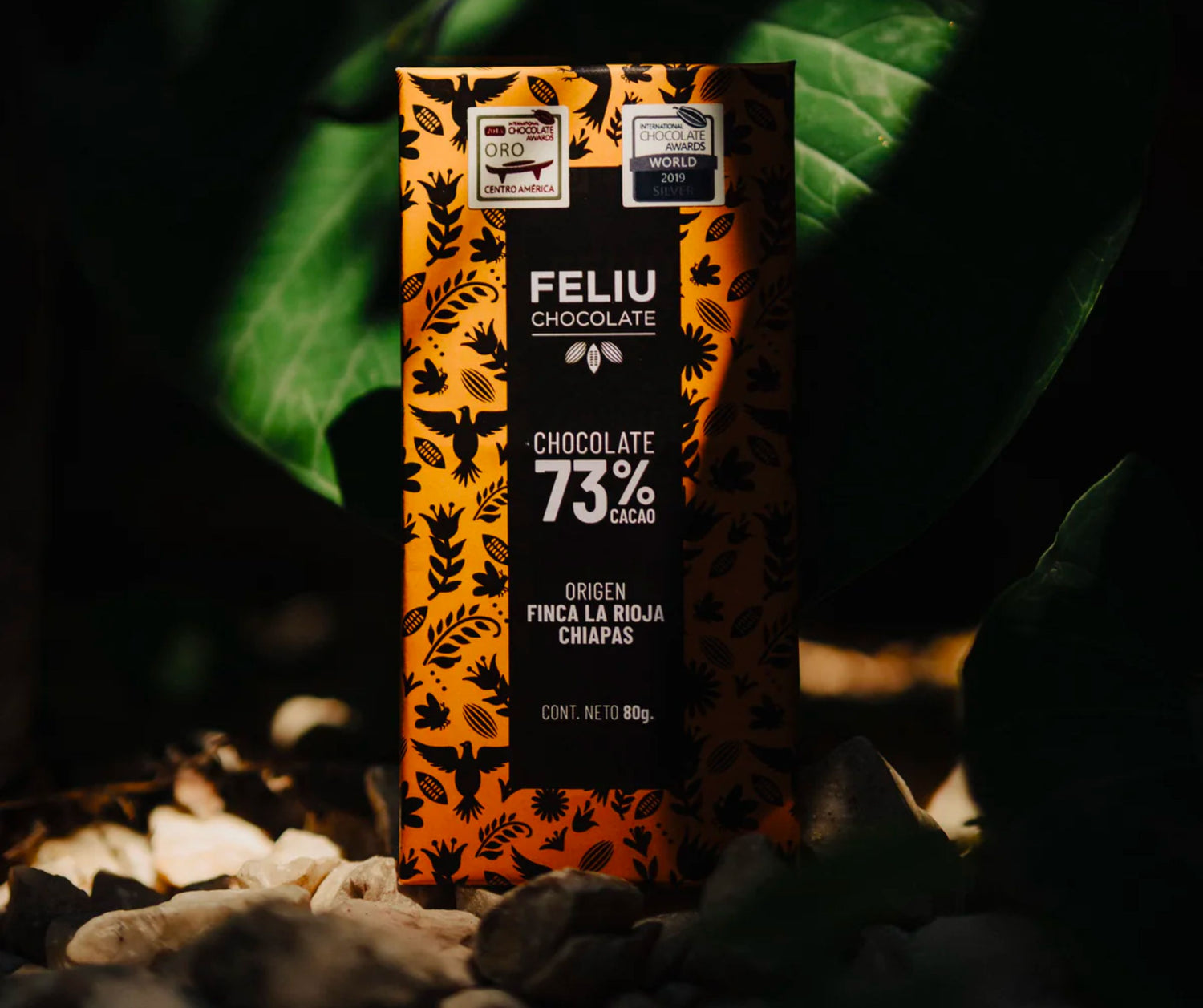
The Winners of the 1st Mexican Cacao Country Support Competition, also known as the 1er Concurso Nacional de Chocolate Mexicano, were officially announced by The International Chocolate Awards last year. The judging process took place both in Mexico and internationally, with evaluations conducted by a diverse panel of judges and the Grand Jury throughout October 2023.
The announcement ceremony unfolded on November 17, 2023, in Villahermosa, Tabasco, Mexico, coinciding with the Festival del Chocolate Tabasco. Live and in person, the event showcased heartwarming moments as winners took the stage, proudly displaying their certificates. Notably, Gold winners expressed gratitude for the dedicated efforts of cacao farmers and their teams.
The judging panel featured regular judges from Mexico, IICCT (international Institute for Chocolate and Cacao Tasting) alumni, local specialists, and members of the international Grand Jury. Anonymity was maintained throughout the judging process, including the Grand Jury final session, during which Gold, Silver, and Bronze prizes were awarded through private voting in accordance with the Grand Jury rules.
In its' majority, this list represented by plain dark chocolate bars crafted from pure high-end single-origin Mexican cacao. The inclusionz of pitaya de mayo (cactus pear) and Cempasuchil flowers (used in Day of The Dead celebration) with almonds adds layers to this selection, representing a complex and intense taste. Notably, Mexican chocolate distinguishes itself with a more rustic texture compared to various other chocolate styles. But it's not necessary the case for a "new wave" of craft chocolate making. Explore the distinctive tradition behind the creation of Mexican chocolate, discover creative ways to incorporate it into recipes, and delve into more intriguing aspects of this unique culinary tradition.
About Mexican Chocolate
The art of chocolate making has ancient roots, dating back to 1900 BCE in Mesoamerica. Interestingly, the methods employed by the Aztecs bear similarities to contemporary practices in Mexico. Cacao beans undergo roasting, peeling, and grinding into a paste, achieved with traditional tools like the metate or a mill known as a molino. The addition of sugar follows.
Over the years, chocolate making in Mexico has undergone evolution, introducing the concept of bean-to-bar chocolate making. For instance, Feliu Chocolate from Guadalajara works with cocoa, from farms, selecting each beans varieties and processing them according to their characteristics: genetics, cultivation, bean size, time of year, etc. They test each batch to adjust the process and achieve the best aromatic expression of each variety. For now they only work with Mexican cocoa, mainly from Chiapas and Tabasco, purchased directly from the producers, whom they visit regularly. Given Mexico's status as the birthplace of various food ingredients, chocolate often features lical products, like catus pear or mezcal. With the arrival of the Spanish, additional ingredients such as nuts and spices, notably almonds and cardamom, found their way into Mexican chocolate.
Varieties
In contrast to the conventional "milk" or "dark" labels, Mexican chocolate often adopts an approach common for single-origin bean-to-bar chocolate, indicating different cacao-growing region . While varieties incorporating spices, chiles, and nuts are prevalent, the evolving craft of chocolate making has led many artisans to experiment with unconventional and distinctive ingredients like mole or pumpkin seeds.
Applications of Mexican Chocolate
Mexican chocolate is commonly prepared as hot chocolate, chocolate atole, or incorporated into recipes such as mole negro. A traditional practice involves whipping hot chocolate into a froth using a tool called a molinillo. The addition of almonds is believed to contribute to the distinctive texture of Mexican-style hot chocolate, drawing potential inspiration from the Aztec era, where evidence suggests the enjoyment of a bubbly, chocolatey beverage.
How Does It Taste?
Mexican chocolate is characterized by the flavour of cacao beans that were used to produce a particular bar. The distinct taste arises from the straightforward process of roasting and grinding cacao beans into a liquor. Like many craft bean-to-bar chocolate, it undergoes further refinement with conching machines to aerate and mellow the flavor. In many cases, Mexican chocolate retains its grainy texture by skipping this step. Additionally, akin to the influence of soil on the flavor of wine or coffee, the origin of cacao beans imparts unique characteristics. It's noteworthy that a significant portion of Mexican chocolate does not source its beans from Mexico. However, this is not the case for chocolate represented in this list. While this may not be a decisive factor for everyone, it's valuable information for those who prioritize the origin of their chocolate and wish to explore suitable options.
Recipes Featuring Mexican Chocolate
While in many cases Mexican chocolate can be enjoyed on its own, it is often utilized in beverages and various recipes. It's important to note that Mexican chocolate already includes sugar, so depending on your taste preferences, you may choose to refrain from adding additional sweeteners. The list of recipes may include authentic Mexican hot chocolate, black mole or another traditional Mexican chocolate drink called champurrado.
Where to Purchase Mexican Chocolate
If you’re looking for quick options, Hello Chocolate online chocolate shop. That said, the chocolate business has seen its fair share of corruption, with farmers being paid next to nothing and the local ecosystems destroyed in service to cacao cultivation. In our case, we work only with brands that pay the farmers directly and who take care of soil health. Some brands include Feliu Chocolate or Metiche, that are 100 percent Mexican grown and produced chocolate.
Chocolate Storage
Best Mexican Chocolate Brands 2023
The List Of Mexican Competition Winners 2023
Plain/Origin Chocolate Bars
Feliu Chocolate, Finca la Rioja 73% - Gold (SCORE 89.7 OF 100)
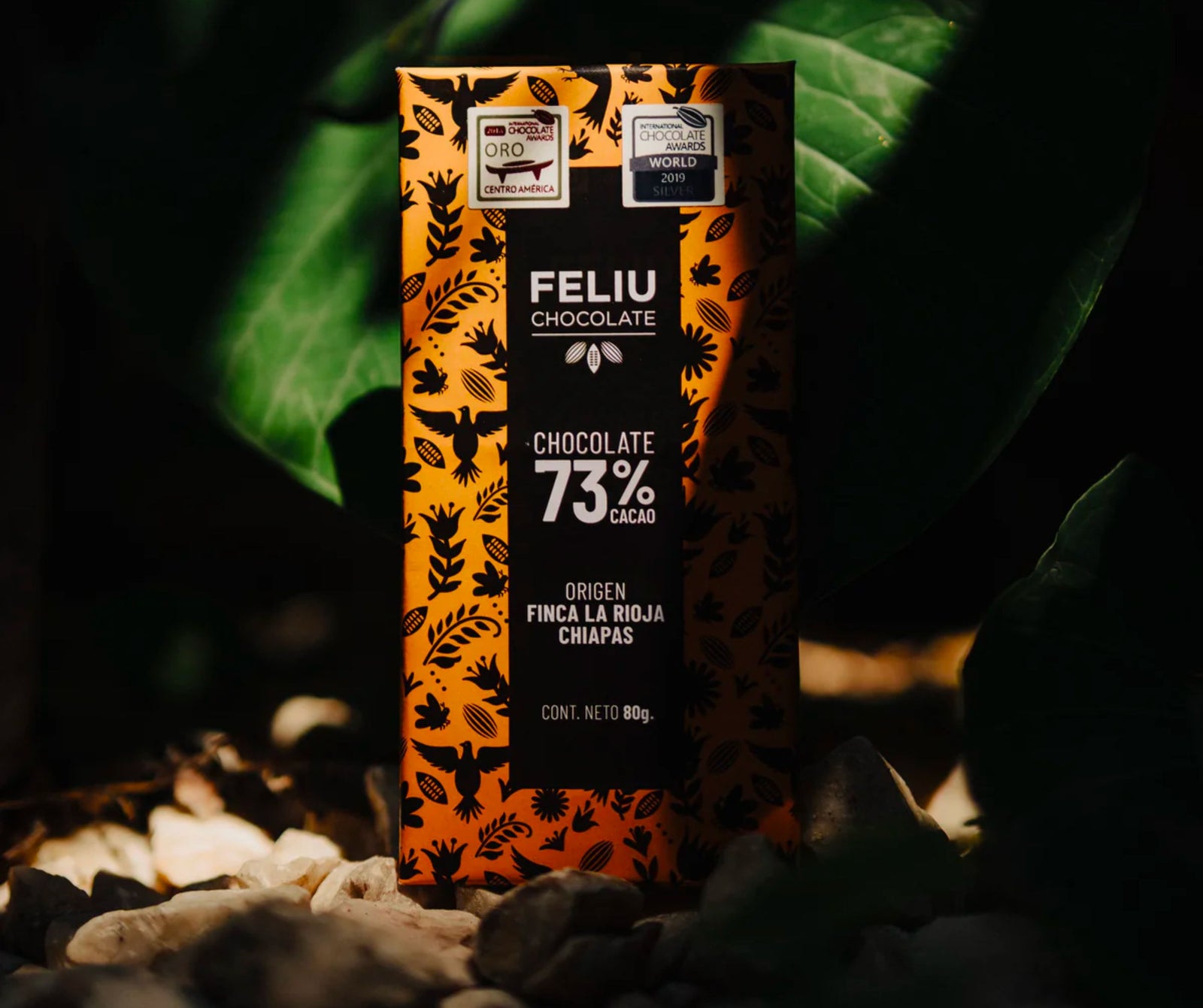
Feliu Chocolate - Flor De Un Dia 70% - Silver (88.8 of 100)
Situated in the southern Chiapas region, nestled in the foothills of the Mexican Sierra Madre, lies the village of Flor de un día. The chocolate produced here is a harmonious blend of indigenous cocoa varieties, boasting a flavor profile that evokes memories of ripe mango and exotic tropical fruits. A generous and extended fermentation process ensures that the bitterness remains subtle and only emerges towards the very end of the tasting experience.
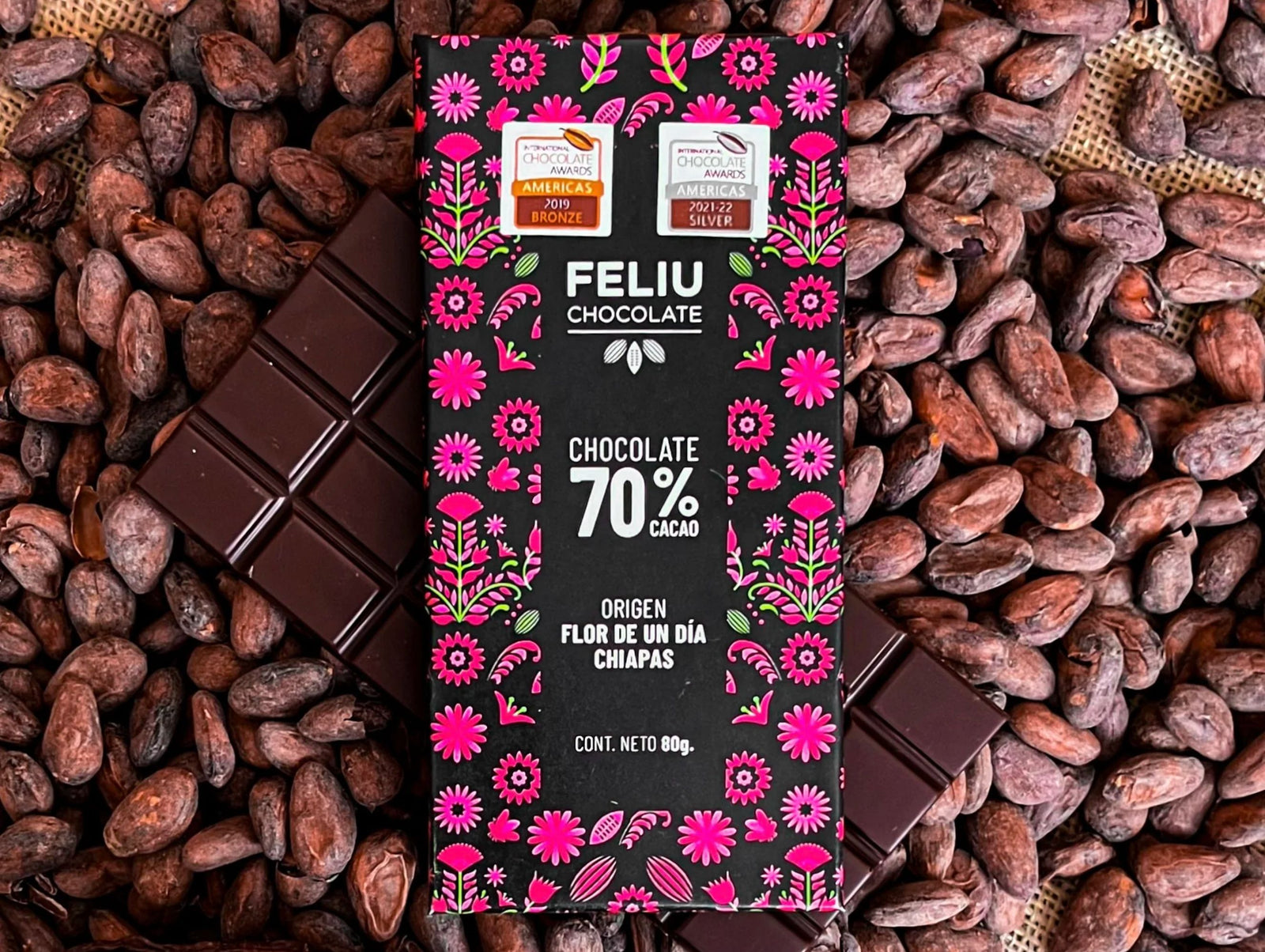
Feliu Chocolate - Soconusco 71% - Gold (86.9 OF 100)
This chocolate is crafted from a blend of hybrid and Criollo cocoa varieties sourced from the Soconusco region in southern Chiapas. This unique blend boasts a remarkably intense aroma, characterized by vibrant citrus and fruity notes, accompanied by hints of toasted bread and raisins. Soconusco holds the distinction of being the birthplace of cocoa production in Mexico. It is likely one of the earliest regions where cocoa was cultivated on a substantial scale, dating back to pre-Columbian times. Our commitment to quality and sustainability is evident in our direct purchasing from local cocoa producers, ensuring they receive fair compensation in exchange for meticulous selection and post-harvest processing.

Feliu Chocolate - Soconusco 71% - Gold (88.2 OF 100)
Exclusively crafted from cocoa sourced from Soconusco, Chiapas,this sugar-free dark chocolate barundergoes a meticulous process. The cocoa is fermented, roasted, refined, and then thoughtfully aged for a minimum of two months, imparting a gentle, fruit-forward, and nutty flavor with subtle acidity.
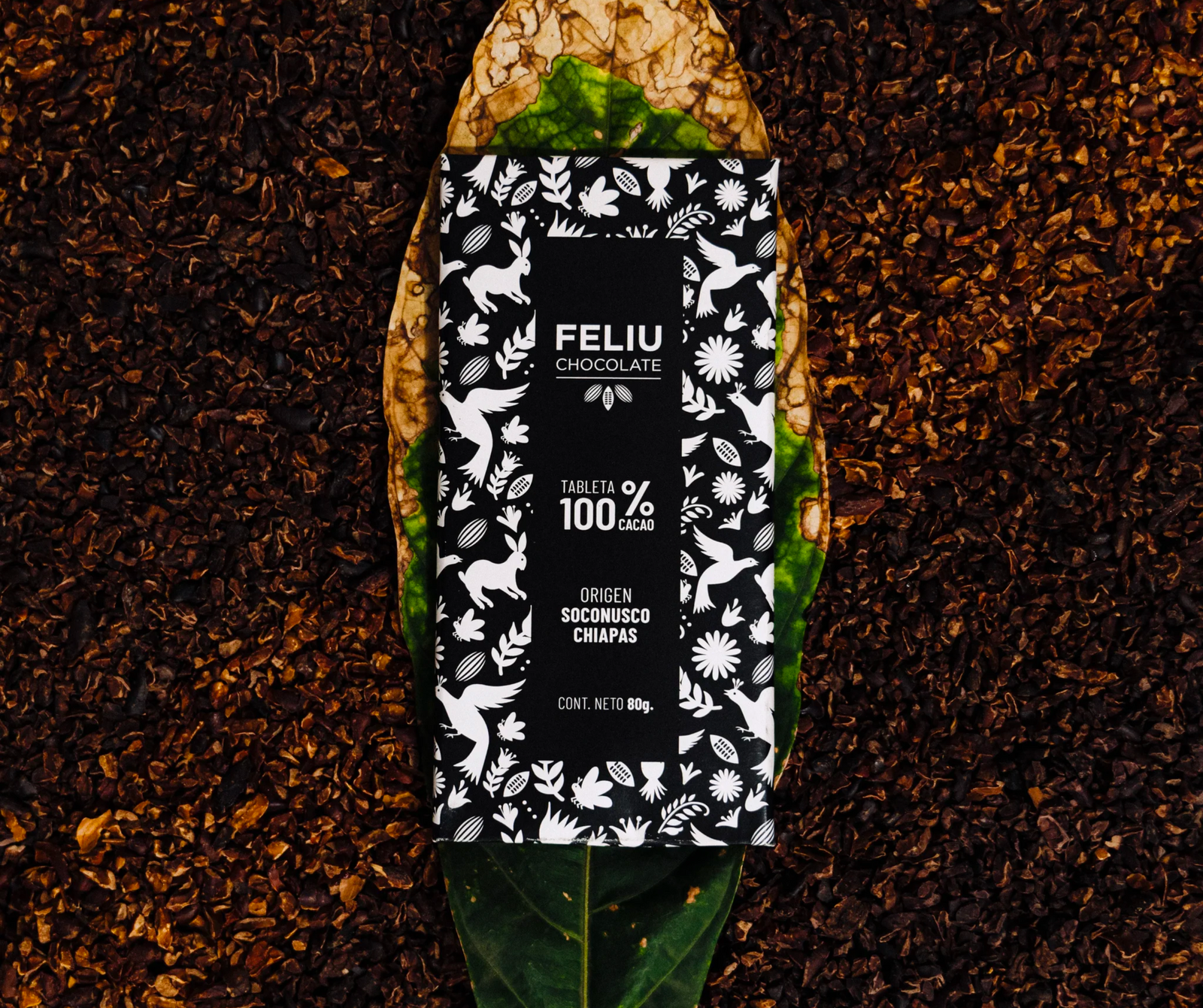
Flavoured Bars
FELIU CHOCOLATE - PITAYA DE MAYO - GOLD (SCORE 89.9 OF 100)
Feliu blends cocoa varieties sourced from Soconusco (Chiapas) and Chontalpa (Tabasco) regions to create a unique fusion that accentuates the exotic flavor of a native Mexican cactus fruit, the Jalisco pitaya, also known as Mayo pitaya. The outcome is a great Mexican chocolate with a balanced profile, featuring mild bitterness and a subtle astringency. It shines with vibrant fruity acidity that harmoniously complements a delightful sweetness. Its intense aroma evokes notes of red fruits like strawberries, alongside hints of tamarind and hibiscus.
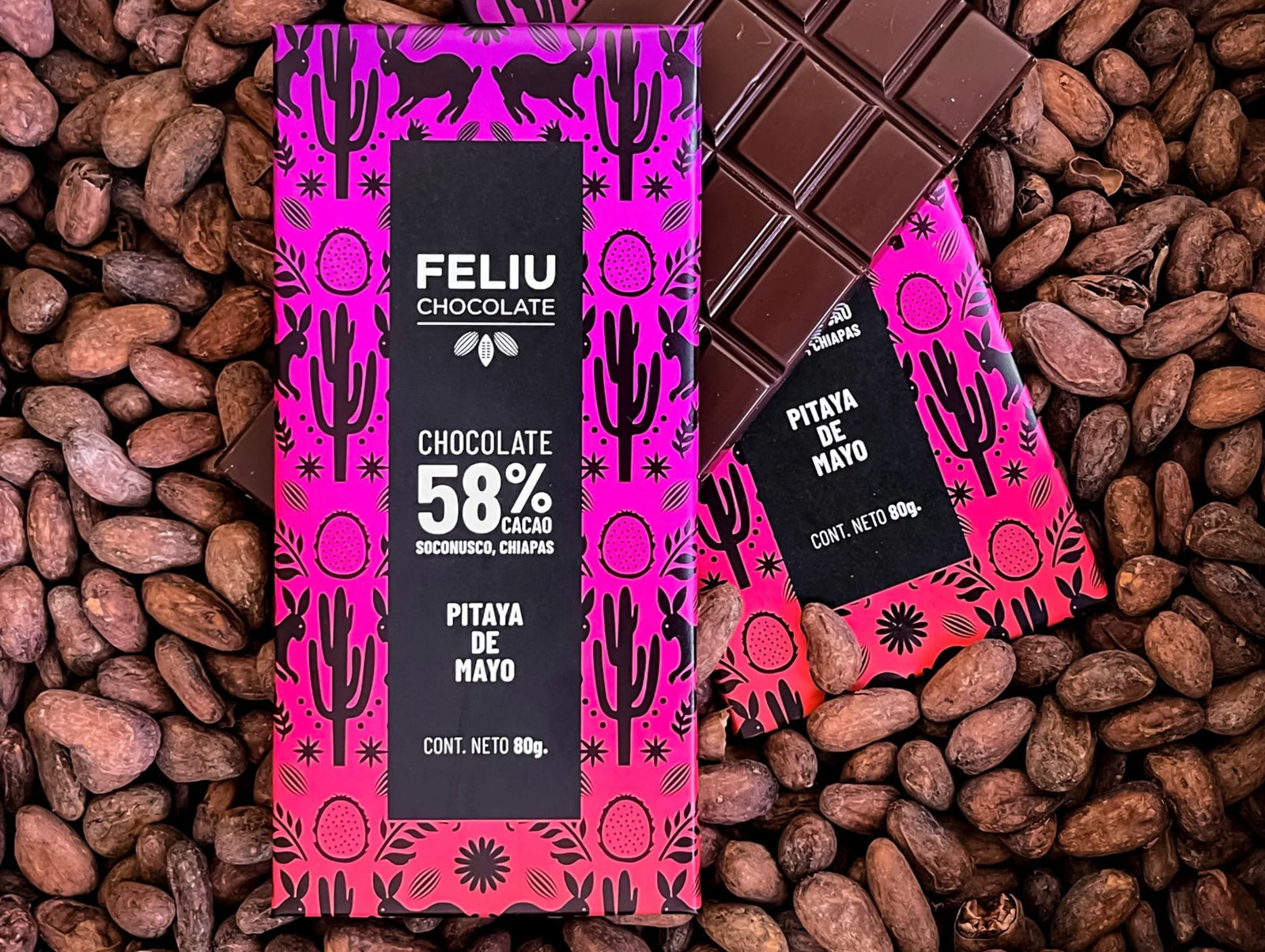
Feliu Chocolate - Milk & Vanilla - Gold (Score 88.5 of 100)
It's a decadent milk chocolate, adorned with a generous cocoa content. Skillfully crafted using the finest cocoa sourced from Soconusco, Chiapas, and the unique essence of Papantla, Veracruz's vanilla. This rendition of a classic recipe showcases heightened cocoa intensity, authentic vanilla, and a fusion of 100% Mexican ingredients.
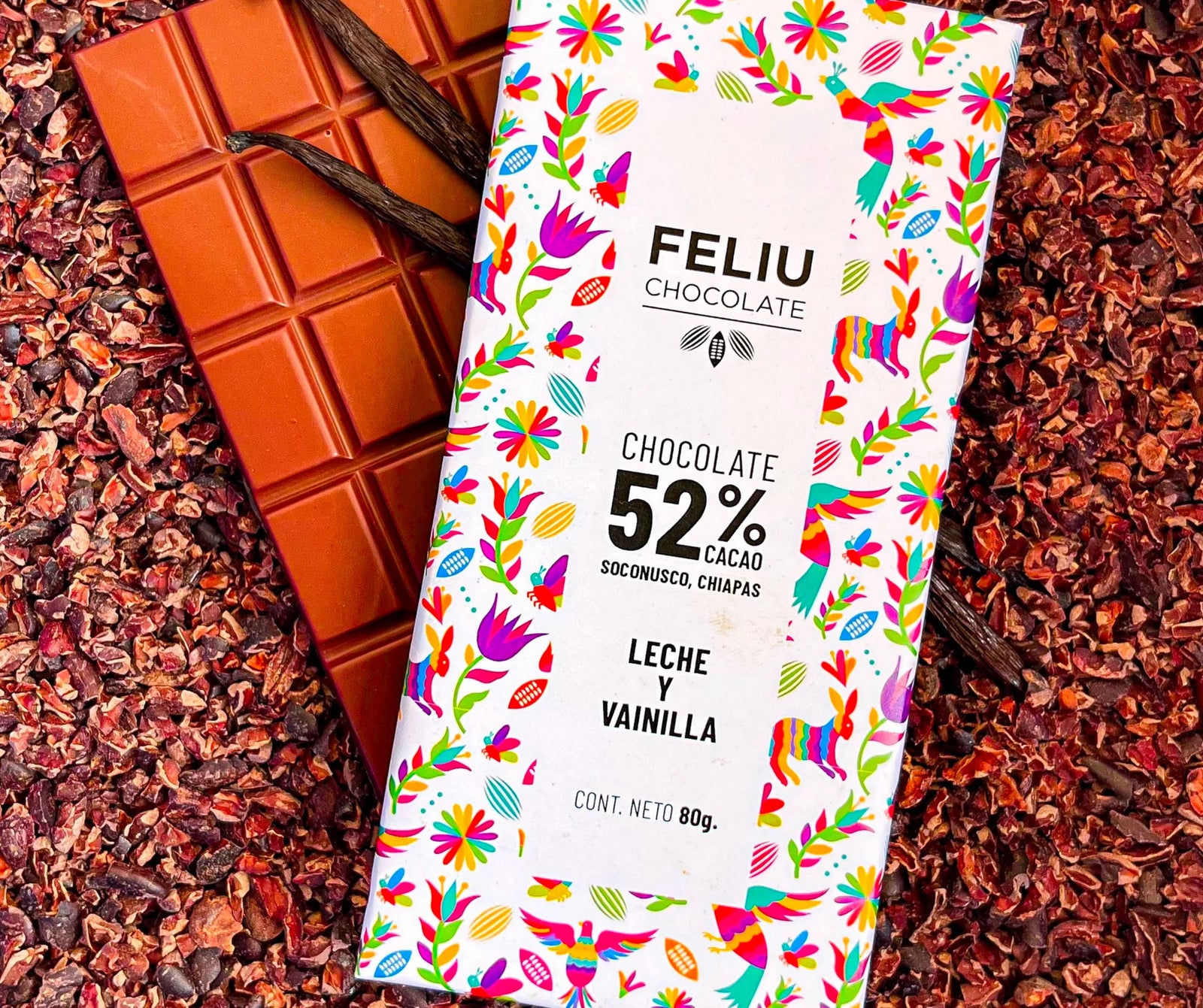
Feliu Chocolate - Moca (Milk & Coffee) 54% - Silver (Score 86.0 of 100)
This chocolate bar offers a rich blend of Mexican coffee and cocoa flavors, expertly combined with milk and sugar. It features cocoa sourced from Soconusco, Chiapas, and freshly roasted pulped coffee from Atoyac de Álvarez, Guerrero. Despite its classification as milk chocolate, its cocoa intensity gives it a darker appearance, yet it maintains a harmonious balance where no single flavor dominates.
